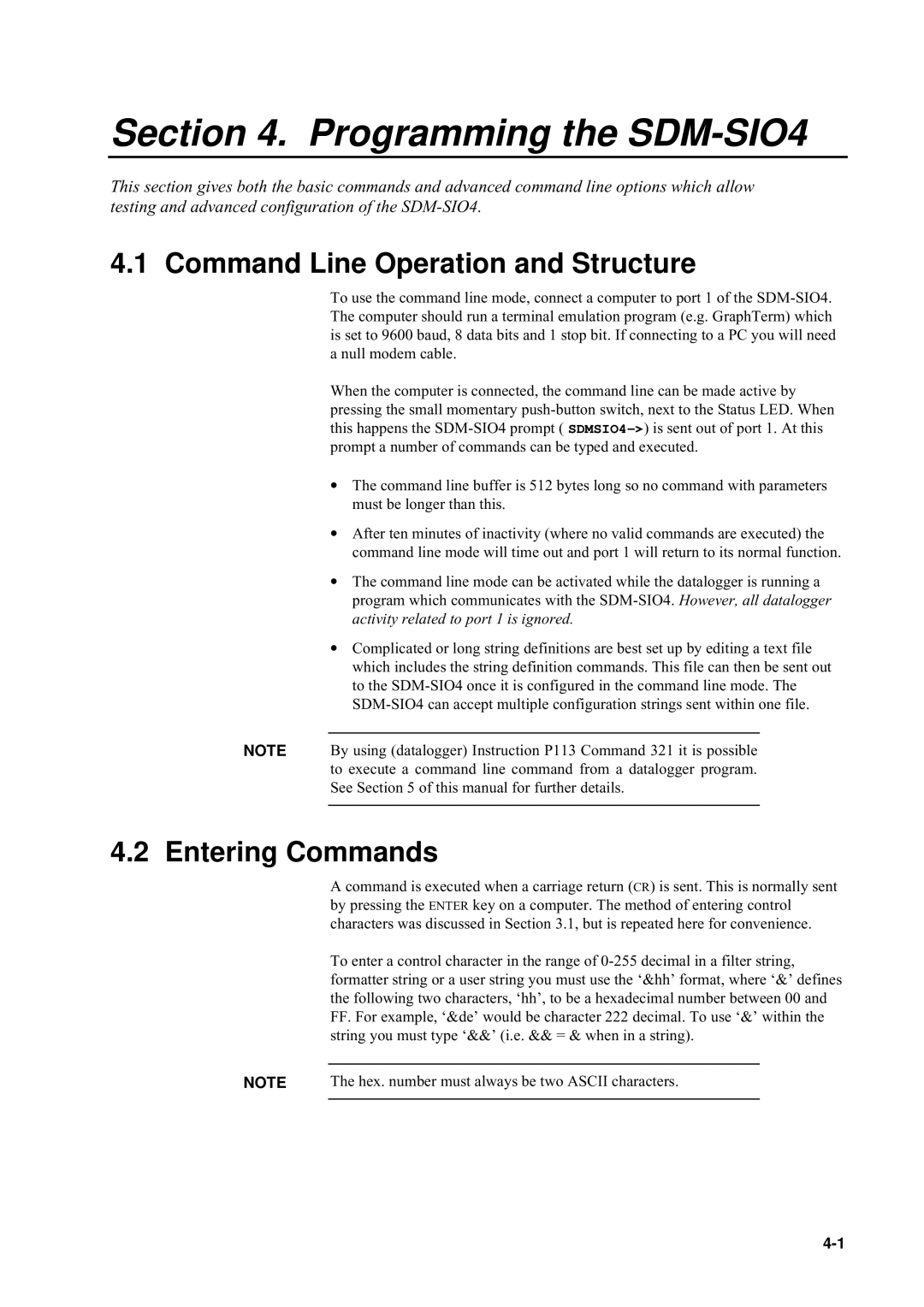
Section 4. Programming the SDM-SIO4
This section gives both the basic commands and advanced command line options which allow testing and advanced configuration of the
4.1 Command Line Operation and Structure
To use the command line mode, connect a computer to port 1 of the
When the computer is connected, the command line can be made active by pressing the small momentary
∙The command line buffer is 512 bytes long so no command with parameters must be longer than this.
∙After ten minutes of inactivity (where no valid commands are executed) the command line mode will time out and port 1 will return to its normal function.
∙The command line mode can be activated while the datalogger is running a program which communicates with the
∙Complicated or long string definitions are best set up by editing a text file which includes the string definition commands. This file can then be sent out to the
NOTE By using (datalogger) Instruction P113 Command 321 it is possible to execute a command line command from a datalogger program. See Section 5 of this manual for further details.
4.2 Entering Commands
A command is executed when a carriage return (CR) is sent. This is normally sent by pressing the ENTER key on a computer. The method of entering control characters was discussed in Section 3.1, but is repeated here for convenience.
To enter a control character in the range of
FF.For example, ‘&de’ would be character 222 decimal. To use ‘&’ within the string you must type ‘&&’ (i.e. && = & when in a string).
NOTE | The hex. number must always be two ASCII characters. |
|
|
